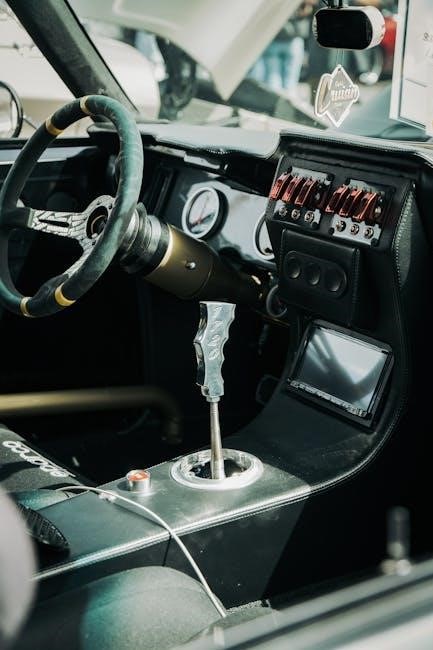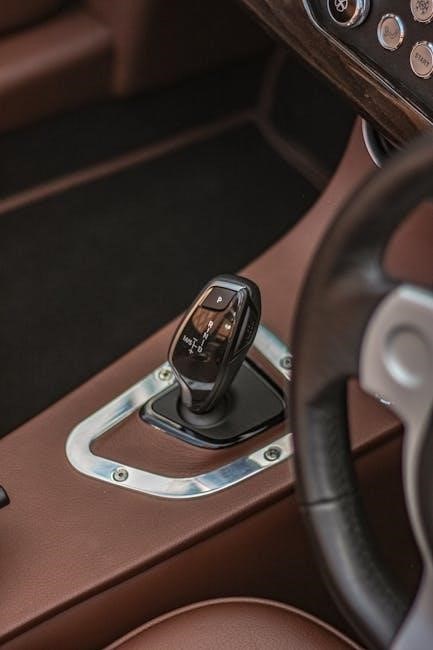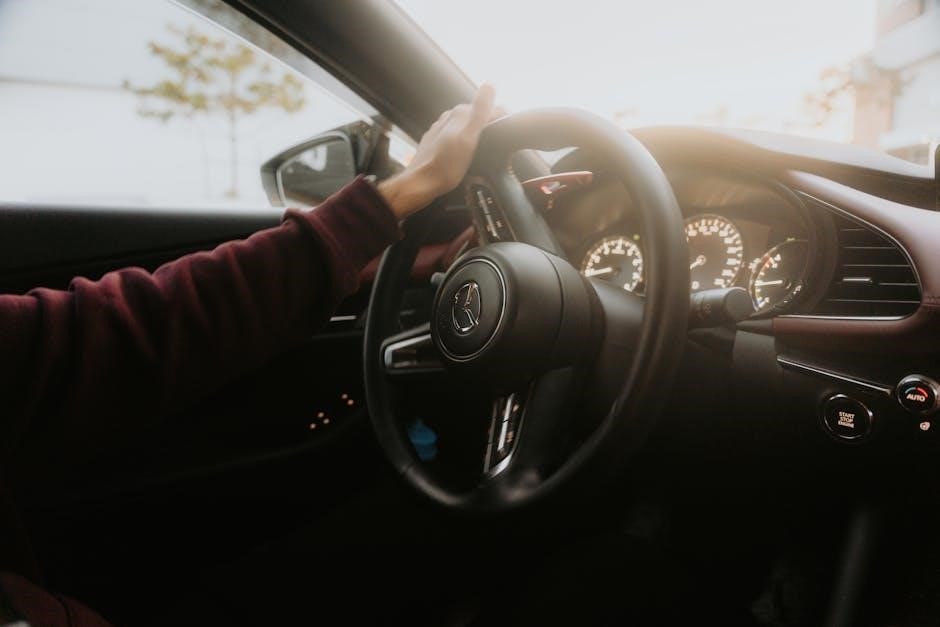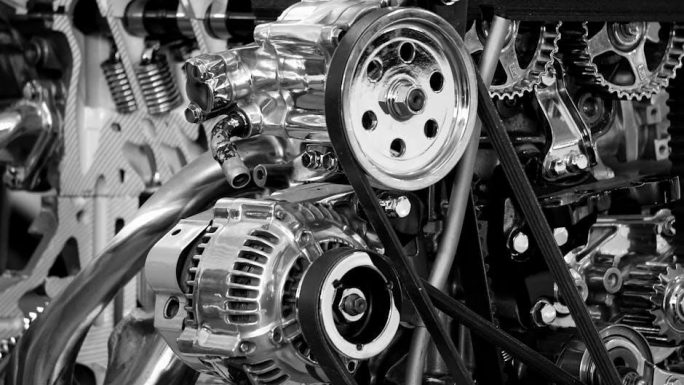Can You Have Auto Start with a Manual Transmission?
Auto start systems can be installed in manual transmission vehicles‚ but they require the car to be in neutral gear for safe operation. Aftermarket solutions exist‚ though manufacturers typically don’t support this feature due to safety and functionality concerns.
Overview of Auto Start Technology
Auto start technology‚ also known as remote start‚ allows a vehicle to be started without physical interaction with the ignition system. This feature is commonly found in modern cars and is designed for convenience‚ enabling drivers to start their vehicles from a distance. In the case of manual transmission vehicles‚ the system must ensure the car is in neutral gear before starting to prevent unintended movement. While auto start is more prevalent in automatic vehicles‚ aftermarket solutions exist for manual transmissions‚ though they require careful installation and setup. Safety mechanisms‚ such as gear position sensors‚ are critical to prevent accidents. The technology typically involves a remote control or smartphone app that communicates with the vehicle’s computer to initiate the start process. Despite its popularity‚ auto start systems for manual cars are less common due to the complexities of ensuring safe operation. However‚ advancements in automotive electronics have made such setups more feasible‚ though compatibility and reliability remain key considerations.

Understanding Manual Transmission Mechanics
A manual transmission operates by requiring the driver to manually change gears using a clutch pedal and gearshift. The clutch pedal disengages the engine from the transmission‚ allowing the driver to shift gears without grinding. The gearbox contains multiple gears that provide different speed and torque ratios‚ enabling the vehicle to accelerate efficiently. The gearshift is used to select the appropriate gear based on the vehicle’s speed and load. In manual transmissions‚ the driver has full control over gear selection‚ which can enhance fuel efficiency and driving performance. However‚ this system requires the driver to engage the clutch and shift gears manually‚ which can be less convenient than automatic transmissions. For auto start functionality‚ manual transmissions present unique challenges‚ as the system must ensure the vehicle is in neutral gear to avoid unintended movement when starting remotely. This requires precise coordination between the clutch‚ gearbox‚ and engine control systems‚ making auto start integration more complex compared to automatic vehicles.

Feasibility of Auto Start in Manual Vehicles
Auto start in manual vehicles is feasible with proper installation and precautions. The car must be in neutral gear to ensure safety and prevent unintended movement. Aftermarket systems can be installed‚ but they require careful setup and consideration of technical and safety aspects to function reliably and avoid potential issues.
Technical Requirements for Auto Start in Manual Cars
Auto start systems in manual cars require specific technical adjustments to ensure safe and reliable operation. The vehicle must be in neutral gear to activate the system‚ as starting in gear could lead to unintended movement. Neutral safety switches are often used to confirm the gear position‚ preventing the engine from starting in gear. Additionally‚ aftermarket systems like Compustar incorporate advanced features to monitor the vehicle’s state and ensure safe startup. These systems may require bypassing the clutch pedal sensor or integrating with the car’s electronic control unit (ECU) to function properly. Professional installation is highly recommended to avoid potential issues. The system must also account for manual transmission specifics‚ such as gear engagement and clutch operation‚ to maintain functionality. While technical challenges exist‚ modern aftermarket solutions have made auto start feasible for manual cars‚ offering convenience without compromising safety.
Safety Considerations

Ensuring safety is paramount when implementing an auto start system in a manual transmission vehicle. The primary concern is preventing accidental movement. Neutral gear verification is critical‚ as the system must confirm the vehicle is in neutral before starting the engine. If the car were to start in gear‚ it could unexpectedly move‚ posing a significant risk. Additionally‚ aftermarket systems must integrate with the vehicle’s clutch and gear sensors to prevent improper engagement. Unauthorized use is another concern‚ as leaving the car unattended with the auto start feature active could lead to theft or accidental activation. Proper installation is essential to avoid these risks‚ ensuring the system only operates under safe conditions. Drivers should also be aware of their surroundings when using auto start‚ as the sudden starting of the engine could alarm others. Manufacturer-approved systems are generally safer‚ but aftermarket solutions require careful configuration. Always prioritize safety to avoid potential hazards associated with auto start technology in manual cars.

Manufacturer Solutions
Most manufacturers do not offer factory-installed auto start systems for manual transmissions due to safety and operational challenges. However‚ some aftermarket companies provide compatible solutions‚ ensuring safe and reliable functionality for manual vehicles with proper installation.
Factory-Installed Auto Start Systems
Factory-installed auto start systems are typically designed for automatic transmissions‚ as they seamlessly integrate with the vehicle’s existing technology. For manual transmissions‚ such systems are rare because they require additional safety measures to prevent accidental starts while in gear. Most manufacturers avoid offering these systems due to potential risks and the complexity of ensuring the vehicle is in neutral when starting remotely. However‚ some high-end or specialized models may include advanced features that accommodate manual transmissions‚ often with failsafes to prevent engine start unless the vehicle is properly secured. These systems are designed to enhance convenience without compromising safety‚ but they remain less common compared to their automatic counterparts.
Aftermarket Auto Start Options
The aftermarket industry provides several solutions for adding auto start functionality to manual transmission vehicles. These systems are designed to work with the vehicle’s existing electronics‚ ensuring safe and reliable operation. One popular option is the Compustar remote start system‚ which is specifically engineered for manual transmissions and includes features like “neutral safety” to prevent the car from starting unless it is in neutral gear. Other aftermarket kits may require additional components‚ such as a neutral safety switch or a bypass module‚ to ensure proper installation and functionality. While these systems can offer the convenience of remote starting‚ they often require professional installation to guarantee safety and compatibility with the vehicle’s mechanical setup. Additionally‚ some aftermarket solutions may void the manufacturer’s warranty‚ so it is essential to consult with a qualified installer before proceeding.

Installation and Configuration

Professional expertise is crucial for installing auto start systems in manual vehicles due to their complexity; Configuration must ensure the car starts only in neutral‚ with some systems requiring a neutral safety switch for proper function.
Professional Installation Recommendations
Professional installation is highly recommended for auto start systems in manual vehicles due to their complexity. A certified technician should ensure the system is configured correctly‚ with a neutral safety switch installed to prevent the car from starting in gear. Proper wiring and integration with the vehicle’s computer are essential to maintain safety and functionality. Many installers refuse to fit remote start systems in manual cars due to liability concerns‚ but experienced professionals can provide a reliable solution. They will also ensure that the system meets local regulations and manufacturer guidelines‚ minimizing the risk of malfunctions or safety hazards.
